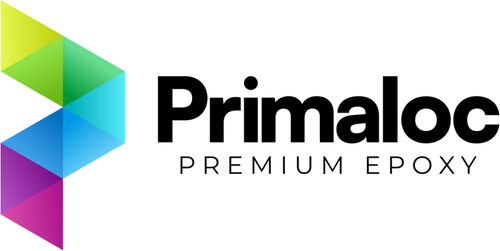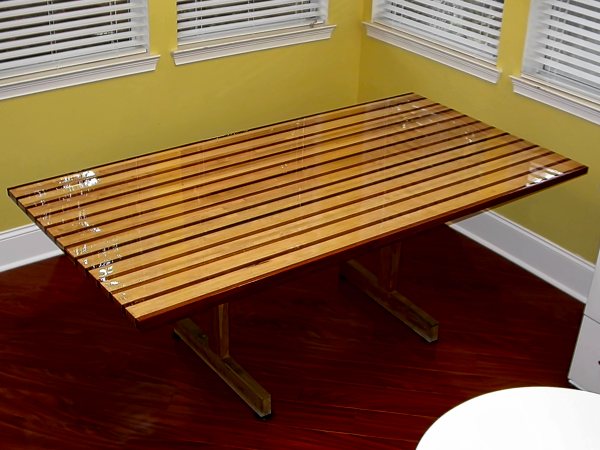The majority of epoxy projects require applying a layer of epoxy onto a substrate material. Among the various application methods, the epoxy flood coat is the most common and essential.
In this article, we'll discuss what a flood coat is, how to properly prepare for this stage of your project, and identify the best type of epoxy for flood coating.
What Are Epoxy Flood Coats?
Epoxy flood coats are comprehensive, self-leveling layers of epoxy resin that are applied to prepared substrate surfaces, such as tabletops, countertops, or other types of furniture and fixtures.
This coating is typically applied as one of the final stages of an epoxy project. Its purpose is to create a smooth, glasslike finish that not only enhances the appearance of the underlying material but also showcases any embedded items or pigments within the resin.
Which Epoxy Is Best for Applying Flood Coats?
Epoxy resin comes in various forms and formulations, each tailored for specific applications. With so many options available, it can be challenging to determine which type is best suited for your project needs.
For applying a flood coat, particularly as the final topcoat of a project, we recommend our Primaloc Bar & Table Top Epoxy.
Choosing Primaloc Bar & Table Top Epoxy Offers Several Benefits:
- Unmatched Strength: This epoxy is designed to withstand significant pressure and is highly resistant to all forms of physical damage, including scratches and dents.
- Impermeable Surface: It creates a seamless, ultra-smooth bond with the substrate, effectively blocking water, stains, and debris, thus preserving the underlying material for years.
- Ease of Maintenance: Maintaining the finish is straightforward with Primaloc. Cleaning up is simple using just mild soap and warm water. Glass cleaner and multi-surface cleaners are also effective, making it easy to keep the surface looking pristine.
With these qualities, Primaloc Bar & Table Top Epoxy ensures a durable, beautiful finish that lasts.
Prior to Your Flood Coat, We Recommend a Seal Coating
In many epoxy projects, one of the initial steps is the seal coat phase. A seal coat is a thin layer of epoxy that is manually applied with a brush in order to seal the pores of the substrate surface. The purpose of this layer is to push out and release any air trapped within the substrate’s pores.
This preventative measure helps avoid the formation of excessive air bubbles in the subsequent flood coat finish. While removing air bubbles is a standard part of the process after applying a flood coat, there's a practical limit to how many bubbles can be removed without risking damage to the finish. Therefore, the seal coat is essential to prevent this.
For a detailed step-by-step guide on applying seal coats, check out our in-depth article.
How Do You Apply an Epoxy Flood Coat?
Applying a flood coat of epoxy involves a multi-step process. Here’s a detailed guide to help you through each stage:
Step #1: Prepare Your Substrate.
Before applying the flood coat, ensure the surface is clean, dry, and free from any contaminants. If there are any previously cured layers of epoxy or sealant, sand them down to create a slightly rough texture, which helps with better adhesion.
Learn more about sanding between epoxy layers here.
Step #2: Mix Your Epoxy Flood Coat Batch.
Mix the epoxy resin and hardener together at the recommended ratio, commonly 1:1, although this may vary based on the product. It’s important to mix thoroughly to ensure the mixture cures correctly.
Learn more about mixing epoxy resin batches here.
Step #3: Pour Your Epoxy Flood Coat.
After mixing, pour the epoxy onto the prepared surface. Thanks to its self-leveling properties, the epoxy should spread evenly by itself. You can also use a spreader or squeegee to assist in covering the entire area uniformly.
Get tips on achieving the ideal epoxy pour here.
Step #4: Remove Any Air Bubbles.
Once the epoxy is poured, promptly address any air bubbles that rise to the surface by using a heat gun or torch. The gentle heat causes the bubbles to expand and burst, smoothing out the finish.
Discover the best methods for preventing and removing air bubbles here.
Step #5: Let the Coating Cure.
Allow the epoxy to cure, which can take from several hours to several days, depending on the product and environmental conditions. During this time, the epoxy transforms into a clear, solid finish, completing the process.
Follow these 5 tips to achieve a perfect cure!
What Are the Advantages of Epoxy Over Other Sealants?
An epoxy flood coat not only enhances the visual appeal of a surface but also provides a remarkably sturdy, protective layer that is resistant to moisture, stains, and scratches. This durability makes it an excellent choice for surfaces subject to frequent wear and tear.
Here are several key benefits of using epoxy flood coats compared to other common sealants:
-
High Durability: Epoxy flood coats create a hard, durable surface that resists scratches, stains, and heat, making them perfect for high-traffic areas like kitchen countertops and dining tables.
-
Waterproofing: Epoxy forms a waterproof barrier that protects the underlying surface from water damage, crucial for areas prone to spills or moisture like kitchens and bathrooms.
-
Aesthetic Flexibility: Epoxy flood coats offer a range of customization options with various colors, patterns, and effects, enabling creative design possibilities. They can also accentuate the natural beauty of materials like wood, providing a sleek, glossy finish.
-
Low Maintenance: Surfaces coated with epoxy are easy to clean and maintain. They require just a damp cloth or a mild cleaning solution for upkeep, and stains are generally easy to remove without harming the epoxy layer.
-
Versatility: Epoxy can be applied to diverse surfaces, such as wood, concrete, metal, and laminate, making it a flexible choice for various projects.
-
Long-lasting Results: When applied and maintained correctly, epoxy flood coats can last many years without the need for replacement or refinishing, offering enduring protection and aesthetics for your surfaces.
Due to these attributes, epoxy flood coats are an increasingly favored option for sealing and enhancing tables, countertops, and other comparable surfaces.
Primaloc Epoxy: Premium Epoxy for Premium Results
With our premium Bar & Table Top Epoxy and our Deep Pour Epoxy, Primaloc gets the job done. Our epoxy resins are premium-grade, with high performance in every category, including:
- Unmatched Strength: A Primaloc finish won't buckle, even under high pressure.
- Long-Lasting Resilience: Primaloc epoxy lasts for many years with minimal care, and can endure high-traffic environments with ease.
- A Crystal-Clear Coating: With its pristine, transparent appearance, looking at a cured Primaloc coating is like peering through a window.
Epoxy resin can be beautiful, strong, and long-lasting—which is why you shouldn't compromise on quality. With Primaloc Epoxy Resin, you get the ultimate finish in durability and visual appeal.
Protect your surfaces by giving them a rock-solid epoxy finish. Choose strong. Choose reliable. Choose Primaloc.





